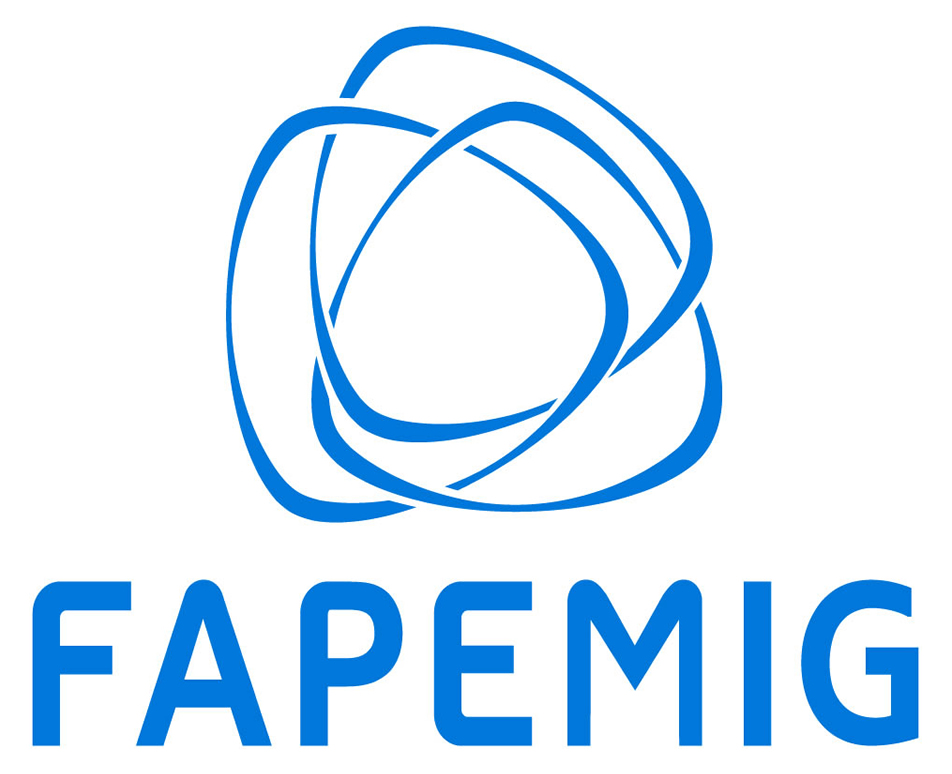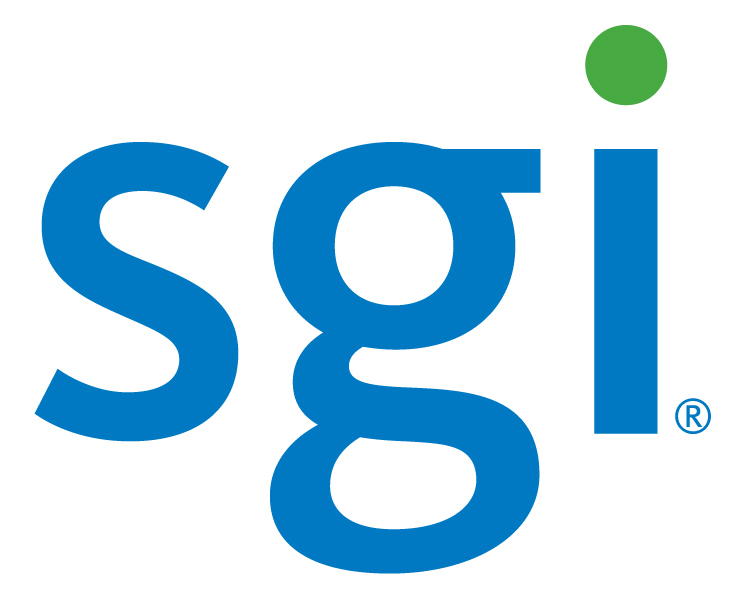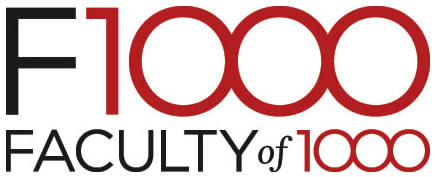Posters
| Category 'C'- Computational aspects' |
| Poster - C01 |
| TipMD: a tool for the identification of PCR-based taxon-specific markers |
| Gabriela Rodrigues-Luiz, Universidade Federal de Minas Gerais, Brazil |
| Edward Valencia, Universidade Federal de Minas Gerais, Brazil Hugo Valdivia , Universidade Federal de Minas Gerais, Brazil Robson Lopes, Universidade Federal de Minas Gerais, Brazil Rodrigo Lourdes, Universidade Federal de Minas Gerais, Brazil Thiago Rodrigues, Centro Federal de Educação Tecnológica de Minas Gerais, Brazil Ricardo Fujiwara , Universidade Federal de Minas Gerais, Brazil Daniella Bartholomeu, Universidade Federal de Minas Gerais, Brazil |
| Short Abstract: The Tool for Identification of Primers for Molecular Diagnosis identifies and targets ortholog genes or SSR regions on genomic data followed by automated design of primers. The tool evaluates the specificity for candidate primers based on alignment and thermodynamic and checks the compatibility among selected primers for multiplex PCR reactions. |
| Poster - C02 |
| A tool to building and manipulating 3-D structures of carbohydrates |
| Marcio Dorn, Federal University of Rio Grande do Sul, Brazil |
| Amanda Torbes, Federal University of Rio Grande do Sul, Brazil Bruno Borguesan, Federal University of Rio Grande do Sul, Brazil Marcio Dorn, Federal University of Rio Grande do Sul, Brazil Hugo Verli, Federal University of Rio Grande do Sul, Brazil |
| Short Abstract: There are several tools to manipulate carbohydrate structures, but the majority this tools uses a two-dimensional symbolic notation. In this paper we propose a tool to building and manipulating carbohydrates structures in their three-dimensional shape which allows a more intuitive and fast vision, facilitating the study of these macromolecules. |
| Poster - C03 |
| Data mining framework to predict short ORFs in prokaryotes by means of a target-decoy database approach and machine learning techniques |
| Fabio Cerqueira, Universidade Federal de Vicosa, Brazil |
| Guilherme Loss de Morais, Laboratorio Nacional de Computacao Cientifica, Brazil Ana Tereza Ribeiro de Vasconcelos, Laboratorio Nacional de Computacao Cientifica, Brazil |
| Short Abstract: Background: It is well known that short proteins (<100 aa) play a vital role in several important cellular activities in all sort of organisms, including prokaryotes. Although the importance of short proteins is widely recognized, the genome annotation processes have not yet achieved satisfying results concerning sORF (short ORF) detection. Up to now, we could find only one comprehensive effort for ORF detection in prokaryotes that includes sORFs, here referred as MGP (missing genes in prokaryotes, Warren et al., 2012). In spite of the fact that MGP has provided a great contribution, the methodology has room for many improvements, especially concerning sensitivity. Still, the authors present the methodology, but they did not make the computational tool available. Finally, MGP is not specific to short ORFs. Methods: In this work, we adapt and improve the MGP method to the specific case of short ORFs. In MGP, a large-scale BLASTP execution is performed, where all ORFs, in a certain size range, extracted and translated from all prokayote genomes present in RefSeq, are taken as the subject database (DB), while intergenic ORFs are taken as the query DB. Alignments are filtered with e-value < 1.0e-5, and only the best hits are considered. If a query ORF aligns to an already-annotated subject ORF, then a new gene is reported as absent annotation. On the other hand, if a query aligns to an intergenic subject ORF, then it is labeled potentially missing gene, and has to pass through additional stringent procedures to be relabeled as missing gene. The first difference in our method concerns the databases. We consider only ORFs in the interval [36,300] nt, prioritizing sORFs. Second, the subject DB is composed of ORF sequences plus their reverse. Normal and reverse sequences compose the so-called target-decoy database (TDDB), a largely used method for false discovery rate (FDR) estimation in proteomics. It replaces the stringent conditions imposed in MGP. Notice that the number of decoy hits, i.e., query ORFs aligned to reverse sequences, is an excellent estimate of the number of random normal hits. Therefore, we do not need to fix a stringent e-value cuttoff. Especially in the case of very short ORFs, e-values tend to be greater. We use the TDDB strategy combined with a neural network model to establish an optimized decision boundary that separates a group of hits with FDR=0. Out of these group, we filter the alignments with significant percentage of query coverage, subject coverage, and identity. Results: With an experiment with datasets containing validated sORFs of five distinct bacteria, we could show an average sensitivity of 97.06% and an average specificity of 99.61%. We also used RNA-Seq data obtained from the sequence read archive (SRA) repository to show that 304 sORFs found in Escherichia coli and 150 sORFs detected in Mycobacterium tuberculosis are, indeed, expressed. This experiment has shown that only one sORF of E. coli had no RNA-Seq read mapped. In both experiments we have noticed many true positives with e-value greater than 1.0e-5 that would be disregarded by MGP. |
| Poster - C04 |
| Machine learning techniques to increase selectivity in pre-miRNA prediction |
| Fabio Cerqueira, Universidade Federal de Vicosa, Brazil |
| Yuri Bento Marques, Universidade Federal de Vicosa and Instituto Federal do Norte de Minas Gerais, Brazil Alcione de Paiva Oliveira, Universidade Federal de Vicosa, Brazil |
| Short Abstract: This work presents an extension of the method for pre-miRNA prediction developed by Tempel et al., 2012, aiming at improving selectivity through machine learning techniques combined with the SMOTE method that copes with imbalance datasets. Our method is compared with other approaches in the literature, showing that we could substantially improve selectivity without compromising sensibility. |
| Poster - C05 |
| EPDB: Epitope-Paratope Properties Database |
| Júlio Martins, Universidade Federal de Minas Gerais, Brazil |
| Benjamin Viart, Universidade Federal de Minas Gerais, Brazil Pedro Teixeira, Universidade Federal de Minas Gerais, Brazil Edgar Kozlova, Universidade Federal de Minas Gerais, Brazil Liza Felicori, Universidade Federal de Minas Gerais, Brazil Carlos Olortegui, Universidade Federal de Minas Gerais, Brazil |
| Short Abstract: Study the composition, location, structure and properties of protein interactions, in antibodies-antigen complexes, is determinant for designing of synthetic antibodies and vaccins. The informations retrieved from database allowed us to extract pattern and rules to improve our understanding of antibody-antigen interfaces and therefore may help improve paratope mimetic peptides design. |
| Poster - C06 |
| Simple java command lines that request Bioinformatics Open Web Services (BOWS) |
| Ricardo Vialle, Universidade Federal de Minas Gerais, Brazil |
| Jose Ortega, UFMG, Brazil Henrique Velloso, UFMG, Brazil |
| Short Abstract: We have developed an interface for BOWS (Bioinformatics Open Web Services) web services platform, that allows a centralized and standardized access to Bioinformatics tools using generic java clients. And a dynamic web page that provides automatic access to registered tools information and clients. |
| Poster - C07 |
| A database system for the aerobic endospore-forming bacteria collection |
| Taina Raiol, University of Brasilia, Brazil |
| Guilherme Natal, University of Brasilia, Brazil Paulo Martins, University of Brasilia, Brazil Juliana Orem , University of Brasilia, Brazil Danilo Cavalcante, University of Brasilia, Brazil Flavia Porto-Carreiro, University of Brasilia, Brazil Maristela Holanda, University of Brasilia, Brazil Taina Raiol, University of Brasilia, Brazil Marlene De-Souza, University of Brasilia, Brazil Maria Walter, University of Brasilia, Brazil |
| Short Abstract: The database developed in this study allowed to efficiently extract significant information of the aerobic endospore-forming bacteria collection (AEFBC) as well as addressed common queries on different database objects. Besides, it consolidates the knowledge about AEFBC and also contributes to the genetic resource preservation of the Midwest Region of Brazil. |
| Poster - C08 |
| A Multiple Whole-Genome Alignment Tool |
| George Condomitti, Universidade de São Paulo, Brazil |
| João Carlos Setubal, Universidade de São Paulo, Brazil |
| Short Abstract: A tool to do Multiple sequence alignment (MSA) of large eukaryotic genomes. By large we mean at least 1 Gbp. Our goal is to have the tool compare up to about 20 such genomes. |
| Poster - C09 |
| Best-Practice pipelines for fully automated and distributed high throughput exome sequencing analysis |
| Marcel Caraciolo, Genomika Diagnósticos Lab, Brazil |
| João Filho, Genomika Diagnósticos lab, Brazil Francisco Filho, Genomika Diagnósticos lab, Brazil |
| Short Abstract: Clinical sequencing has become an important field on NGS applications. In human clinical sequencing the high volume of samples (patients) and demand for fully covered and high quality reads requires an pipeline scalable and with a minimum of manual intervention. We will share our experiences and best-practices for bioinformatic pipelines. |
| Poster - C10 |
| SIMBA: A WEB TOOL FOR COMPLETE ASSEMBLY OF BACTERIAL GENOMES |
| Diego C. B. Mariano, Universidade Federal de Minas Gerais, Brazil |
| Diego Mariano Universidade Federal de Minas Gerais, Brazil Leticia C. Oliveira, Universidade Federal de Minas Gerais, Brazil Edson L. Folador, Universidade Federal de Minas Gerais, Brazil Edgar L. Aguiar, Universidade Federal de Minas Gerais, Brazil Leandro Benevides, Universidade Federal de Minas Gerais, Brazil Felipe L. Pereira, Universidade Federal de Minas Gerais, Brazil Rommel Ramos, Universidade Federal do Pará, Brazil Vasco Azevedo, Universidade Federal de Minas Gerais, Brazil |
| Short Abstract: We present SIMBA (Simple Bacterial Manager for Assemblies), a Web tool designed to manage strategies for a hybrid pipeline that aims to facilitate the implementation of the processes of genome assembly. |
| Poster - C11 |
| A Virtual Screening Rescoring Scheme Based on Deep Learning |
| Janaina Pereira, Fundação Oswaldo Cruz - Fiocruz, Brazil |
| Cícero Nogueira dos Santos, IBM, Brazil Ernesto Caffarena, Fundação Oswaldo Cruz, Brazil |
| Short Abstract: Docking scoring functions are known to be poor predictors of biding affinity, which consists in a weak point of docking and, consequently, a bottleneck for structured-based virtual screening. To improve this problematic we propose a Deep Learning based method that automatically extract affinity binding features to perform rescoring. |
| Poster - C13 |
| Post-doc |
| Atlas Khan, Biological Information Processing Lab (LabPIB), Department of Computing and Mathematics FFCLRP, University of Sao Paulo, Brazil, Brazil |
| Ricardo Zorzetto Nicoliello Vêncio, Department of Computing and Mathematics FFCLRP, Brazil |
| Short Abstract: This work investigated the role of ncRNAs in genome expression and their classification. We employed machine learning methods, particularly the self-organizing map (SOM) to study the role of ncRNAs in the archeal bacteria, H. salinarum. |
| Poster - C14 |
| Implementation of a method to calculate lipophilic and hydrogen bonding surface potentials for proteome-wide studies on the druggability of protein cavities |
| Gisele Rocha, Instituto Oswaldo Cruz, Brazil |
| Floriano Silva-jr, Instituto Oswaldo Cruz, Brazil Paulo Oliveira, Laboratório Nacianal de Biociências, Brazil |
| Short Abstract: We focus on implementing calculations of the lipophilic and hydrogen bond surface potentials in KVFinder. The druggable targets showed deeper and buried cavities with higher proportions of hydrophobic areas than undruggable targets, suggesting that surface potentials can be used to classify protein cavities according to physico-chemical properties correlates with druggability. |
| Poster - C15 |
| molecular modelling applied to the study of proprieties of rmn of carbapenems |
| Sarah Furtado, Universidade Federal do Pará, Brazil |
| Bárbara Silva, Universidade Federal do Pará, Brazil Silvana Silva, Universidade Federal do Pará, Brazil Kelly Guimarães, Universidade Federal do Pará, Brazil Joyce Vale, Universidade Federal do Pará, Brazil Davi Brasil, Universidade Federal do Pará, Brazil Cláudio Nahum, Universidade Federal do Pará, Brazil Hendrik Kruger, Universidade Federal do Pará, Brazil Tricia Naicker, Universidade Federal do Pará, Brazil |
| Short Abstract: This research is about the use of molecular modeling to the study of derivates of carbapenems. The study of these compounds consist of the accomplishment of simulations QM/MM sequential using of method B3LYP/cc-pVDZ and Monte Carlo and had as the objective to the attainment of chemical shifts of NMR |
| Poster - C16 |
| Theoretical Study of the Encapsulation of Nifedipine Derivates |
| Antônio Sousa do Nascimento Júnior, Universidade Federal do Pará, Brazil |
| Frederico Silva, Instituto de Estudos Superiores da Amazônia, Brazil Carlyle Lima, Université Paris Diderot - Paris 7, France Isaque Medeiros, Universidade Federal do Pará, Brazil Sarah Furtado, Universidade Federal do Pará, Brazil Davi Brasil, Universidade Federal do Pará, Brazil Cláudio Alves, Universidade Federal do Pará, Brazil |
| Short Abstract: This work is to propose the best way of In-silico capsulation of Nifedipine, Isradipine and Felodipine from β-cyclodextrin among the conformations that have been suggested in the literature. For this, we used molecular dynamics and verified that β-cyclodextrin has good interaction with nitrogenous compounds of the Nifedipine and Isradipine. |
| Poster - C17 |
| SNP clustering on DBSCAN and sensitivity analysis |
| Vinícius Brum, Universidade Federal de Juiz de Fora, Brazil |
| Itamar Oliveira, Universidade Federal de Juiz de Fora, Brazil Marcos Vinícius Silva, Empresa Brasileira de Pesquisa Agropecuária, Brazil Wagner Arbex, Empresa Brasileira de Pesquisa Agropecuária, Brazil |
| Short Abstract: This work aims acquisition of knowledge from genotype data of 56K SNP chip in genome of three breeds of cattle through algorithm DBSCAN and analysis of sensibility of this algorithm with respect to changes in its initial conditions on this database. |
| Poster - C18 |
| A class of barcodes with high specificity and scalability |
| Elizabeth Tapia, Centro Internacional Franco Argentino de Ciencias de la Información y de Sistemas, Argentina |
| Flavio Spetale, CIFASIS-Conicet, Argentina Pilar Bulacio, CIFASIS-Conicet, Argentina Laura Angelone, CIFASIS-Conicet, Argentina |
| Short Abstract: Binary BCH codes have been recently proposed for the design of barcoding systems of high multiplexing capacity suitable for use in sequencing platforms with mismatch errors. We introduce shortened BCH barcodes, a class of barcodes built from binary BCH codes with high specificity and scalability allowing otherwise prohibited barcoding sizes. |
| Poster - C19 |
| Distance-Based Live Phylogeny |
| Nalvo Almeida, Federal Unviersity of Mato Grosso do Sul, Brazil |
| Graziela Araújo, Federal University of Mato Grosso do Sul, Brazil Guilherme Telles, State University of Campinas, Brazil Maria Emília Walter, University of Brasília, Brazil |
| Short Abstract: The Distance-Based Live Phylogeny Problem generalizes the original Distance-Based Phylogeny Problem by admitting living ancestors among the taxonomic objects. This work solves this problem using a Neighbor-Joining-like approach. A test suite was implemented and results show that this approach is promising, returning close topologies when compared to the expected ones. |
| Poster - C21 |
| Using Binary Decision Diagrams (BDDs) for Memory Optimization in Basic Local Alignment Search Tool (BLAST) |
| Demian Oliveira, Universidade Federal de Minas Gerais, Brazil |
| Fernando Braz Universidade Federal de Minas Gerais, Brazil Fernando Braz, Universidade Federal de Minas Gerais, Brazil Bruno Ferreira, Universidade Federal de Minas Gerais, Brazil Alessandra Faria-Campos, Universidade Federal de Minas Gerais, Brazil Sérgio Campos, Universidade Federal de Minas Gerais, Brazil |
| Short Abstract: None On File |
| Poster - C22 |
| Robustness in the SNP Filtering with Neural Network |
| Bruno Zonovelli, Federal University of Juiz de Fora, Brazil |
| Carlos Cristiano H Borges, Federal University of Juiz de Fora, Brazil Wagner Antonio Arbex, Brazilian Agricultural Research Corporation, Brazil |
| Short Abstract: None On File |
| Poster - C23 |
| Orienting the dipole in a molecular dynamics |
| Alejandro Bernardin, Fundacion Ciencia & Vida, Chile |
| Jose Garate, Fundacion Ciencia & Vida, Chile Tomas Perez-Acle, Fundacion Ciencia & Vida, Chile |
| Short Abstract: Molecular dynamics (MD) has become a standard method for the inspections of molecular systems at the atomic scale. Several MD studies have explored the influence of externally applied electric fields (EF) unraveling interesting phenomena such as voltage dependent gating, electro-freezing, enhance single diffusion, etc. In general, non-thermal effects of EF can be divided into translational and orientational, where the former are present for entities where a net charge is present whereas the latter are a consequence of the presence of a net dipole. In MD, orientational effects have been addressed by directly measuring dipolar kinetics and orientation in the form of relaxation times, dipolar alignments rotational diffusivity among others. Nonetheless, the orientational thermodynamics in the presence of externally applied EF's has not been thoroughly addressed and, up to our knowledge, only Potential of Mean force (PMF) calculations employing the direct counting method have been carried out. In this work, we explore the possibility of performing PMF calculations on a reduced space or collective variable geometrically defined by the dipole orientation. In the current implementation, harmonic and adaptative biases employing the Local-Elevation method can be performed. This is equivalent to the application of a “Local” EF, which is shown in this work. Several test were carried out in toy systems, ranging from free molecules in vacuo to confined fluids. We believe that this new collective variable could have potential usage in the study of more complex system such as connexins were orientational EF effects are poorly described at atomic level. |
| Poster - C24 |
| BION2SEL: An Ontology-based Approach for the Selection of Molecular Biology Databases |
| Daniel Lichtnow, Instituto Tecnologico Vale, Brazil |
| Ronnie Alves Universidade Federal de Santa Maria, Brazil Veronica Burriel, Universitat Politecnica de Valencia, Spain Oscar Pastor, Universitat Politecnica de Valencia, Spain Jose Palazzo Moreira de Oliveira, Universidade Federal do rio Grande do Sul, Brazil |
| Short Abstract: None On File |
| Poster - C25 |
| An extensible framework for genomic and metagenomic analysis |
| Luciano Digiampietri, University of São Paulo, Brazil |
| Vivian Pereira, University of São Paulo, Brazil Camila Costa, University of São Paulo, Brazil Geraldo Santos-Júnior, University of São Paulo, Brazil Fernando Stefanini, University of São Paulo, Brazil Caio Santiago, University of São Paulo, Brazil |
| Short Abstract: None On File |
| Poster - C27 |
| Finding specific primers from sintenic blocks and characteristic strings |
| Nalvo Almeida, Federal Unviersity of Mato Grosso do Sul, Brazil |
| Rodrigo Cardoso, Federal University of Mato Grosso do Sul, Brazil Flábio Araújo, Embrapa, Brazil |
| Short Abstract: This work aims to find target-specific primers for closely related species. The idea is to use blocks of syntenic ortholog protein families among the genomes being compared and their gene coordinates, and also a polynomial-time algorithm for computing characteristic strings to find short characteristic sequences in the target genome. |
| Poster - C29 |
| The Weight Small Live Parsimony Problem |
| Nalvo Almeida, Federal Unviersity of Mato Grosso do Sul, Brazil |
| Rogério Güths, Federal University of Mato Grosso do Sul, Brazil Guilherme Telles, State University of Campinas, Brazil Maria Emília Walter, University of Brasília, Brazil |
| Short Abstract: The Live Phylogeny problem aims to reconstruct the tree when not all the taxa are leaves, some of them may be ancestors. We introduce the Weighted Small Live Parsimony Problem and present a polynomial-time algorithm to solve it. This contributes to fully understanding the computational complexity of Live Phylogeny problems. |
Posters
Poster Presentation List & Schedule
Odd numbers:
Poster set up: Day 1 - all day long
Take down: Day 2 after Poster Session
Size: Up to 90cm width x 120 cm height
Even Numbers:
Poster set up: Day 2 after Poster session and Day 3 until the first coffee break
Take Down: Day 3 after Poster Session
Size: Up to 90cm width x 120 cm height
| View Posters By Category |
- A) Bioinformatics of Disease and Treatment
- B) Bioinformatic tools and databases
- C) Computational aspects
- D) Comparative Genomics
- E) Education
- F) Epigenetics
- G) Functional Genomics
- H) Genome Organization and Annotation
- I) Genetic Variation Analysis
- J) Metagenomics
- K) Pathogen informatics
- L) Population Genetics Variation and Evolution
- M) Protein Structure and Function Prediction and Analysis
- N) Proteomics
- O) Sequence Analysis
- P) Systems Biology and Networks
- Q) Other
| Search Posters: |
TOP






